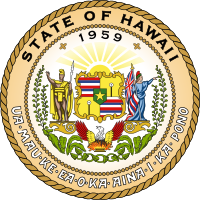HIOSH Injury and Illness Recordkeeping and Reporting Requirements
Disclaimer: HIOSH makes every effort to ensure that this webpage is accurate and up-to-date; however, for the latest information please contact our office.
Recordkeeping Requirements
Employers with more than 10 employees are required to keep a record of serious work-related injuries and illnesses (certain low-risk industries are exempted see §12-52.1, HAR). Minor injuries requiring first aid only do not need to be recorded.
This information helps employers, workers and HIOSH evaluate the safety of a workplace, understand industry hazards, and implement worker protections to reduce and eliminate hazards -preventing future workplace injuries and illnesses.
Maintaining and Posting Records
The records must be maintained at the worksite for at least five years. Each February through April, employers must post a summary (i.e., OSHA 300A) of the injuries and illnesses recorded the previous year. Also, if requested, copies of the records must be provided to employees, or their representatives.
Reporting Requirements
Report to HIOSH office via telephone (808) 586-9102 or in person at the HIOSH office (830 Punchbowl St #425., Honolulu, HI 96813) of the following (§12-52.1, HAR):
- within 8 hours after the death of an employee from work-related incident; and
- within 24 hours of:
- inpatient hospitalization of an employee
- employee’s amputation
- employee’s loss of an eye as a result of a work-related incident
- property damage in excess of $25,000 as a result of work-related incident.
When the HIOSH office is closed, the (808) 586-9102 telephone number will allow you to leave a phone message. In order for the message to be considered officially reported, all of the information in 29 C.F.R. §1904.39(b)(2) must be provided on the answering machine message.
Frequently Asked Questions (FAQs)
Who is required to report?
All employers under HIOSH jurisdiction must report these incidents to HIOSH, even employers who are exempt from routinely keeping OSHA 300 and related records due to company size or industry.
How does HIOSH define amputation?
Per §12-52.1, HAR, An amputation is the traumatic loss of a limb or other external body part. Amputations include a part, such as a limb or appendage, which has been severed, cut off, amputated (either completely or partially); fingertip amputations with or without bone loss; medical amputations resulting from irreparable damage; and amputations of body parts that have since been reattached.
How does HIOSH/OSHA define in-patient hospitalization?
OSHA defines in-patient hospitalization as a formal admission to the in-patient service of a hospital or clinic for care or treatment. Treatment in an Emergency Room only is not reportable.
Who should report an incident involving of a temporary worker?
Similar to the requirements in section 29 CFR 1904.31 for recording injuries and illnesses, the employer that provides the day-to-day supervision of the worker must report to HIOSH any work-related incident resulting in a fatality, in-patient hospitalization, amputation, loss of an eye.
How does HIOSH define a recordable injury or illness?
- Any work-related fatality.
- Any work-related injury or illness that results in loss of consciousness, days away from work, restricted work, or transfer to another job.
- Any work-related injury or illness requiring medical treatment beyond first aid.
- Any work-related diagnosed case of cancer, chronic irreversible diseases, fractured or cracked bones or teeth, and punctured eardrums.
- There are also special recording criteria for work-related cases involving: needlesticks and sharps injuries; medical removal; hearing loss; and tuberculosis.
How does HIOSH define first aid?
- Using a non-prescription medication at nonprescription strength (for medications available in both prescription and non-prescription form, a recommendation by a physician or other licensed health care professional to use a non-prescription medication at prescription strength is considered medical treatment for recordkeeping purposes);
- Administering tetanus immunizations (other immunizations, such as Hepatitis B vaccine or rabies vaccine, are considered medical treatment); Cleaning, flushing or soaking wounds on the surface of the skin
- Using wound coverings such as bandages, Band-Aids™, gauze pads, etc.; or using butterfly bandages or Steri-Strips™ (other wound closing devices such as sutures, staples, etc., are considered medical treatment);
- Using hot or cold therapy;
- Using any non-rigid means of support, such as elastic bandages, wraps, non-rigid back belts, etc. (devices with rigid stays or other systems designed to immobilize parts of the body are considered medical treatment for recordkeeping purposes);
- Using temporary immobilization devices while transporting an accident victim (e.g., splints, slings, neck collars, back boards, etc.). Drilling of a fingernail or toenail to relieve pressure, or draining fluid from a blister;
- Using eye patches;
- Removing foreign bodies from the eye using only irrigation or a cotton swab;
- Removing splinters or foreign material from areas other than the eye by irrigation, tweezers, cotton swabs or other simple means;
- Using finger guards;
- Using massages (physical therapy or chiropractic treatment are considered medical treatment for recordkeeping purposes); or
- Drinking fluids for relief of heat stress.
Where do I download OSHA 300 and related forms?
OSHA 300, 300A, 301 and Instructions (PDF)
Resources
- Highlights of the New Rule
- HIOSH Handbook for Small Businesses (2023) (PDF)
- HIOSH Record Keeping Manual (PDF)
- OSHA 300, 300A, 301 Forms (PDF)
- Partially Exempt Industries for Recordkeeping (PDF)
- Record Keeping PowerPoint Presentation (PDF)
- Report an Incident (PDF)
- To Record Not to Record STS in Hearing (PDF)

